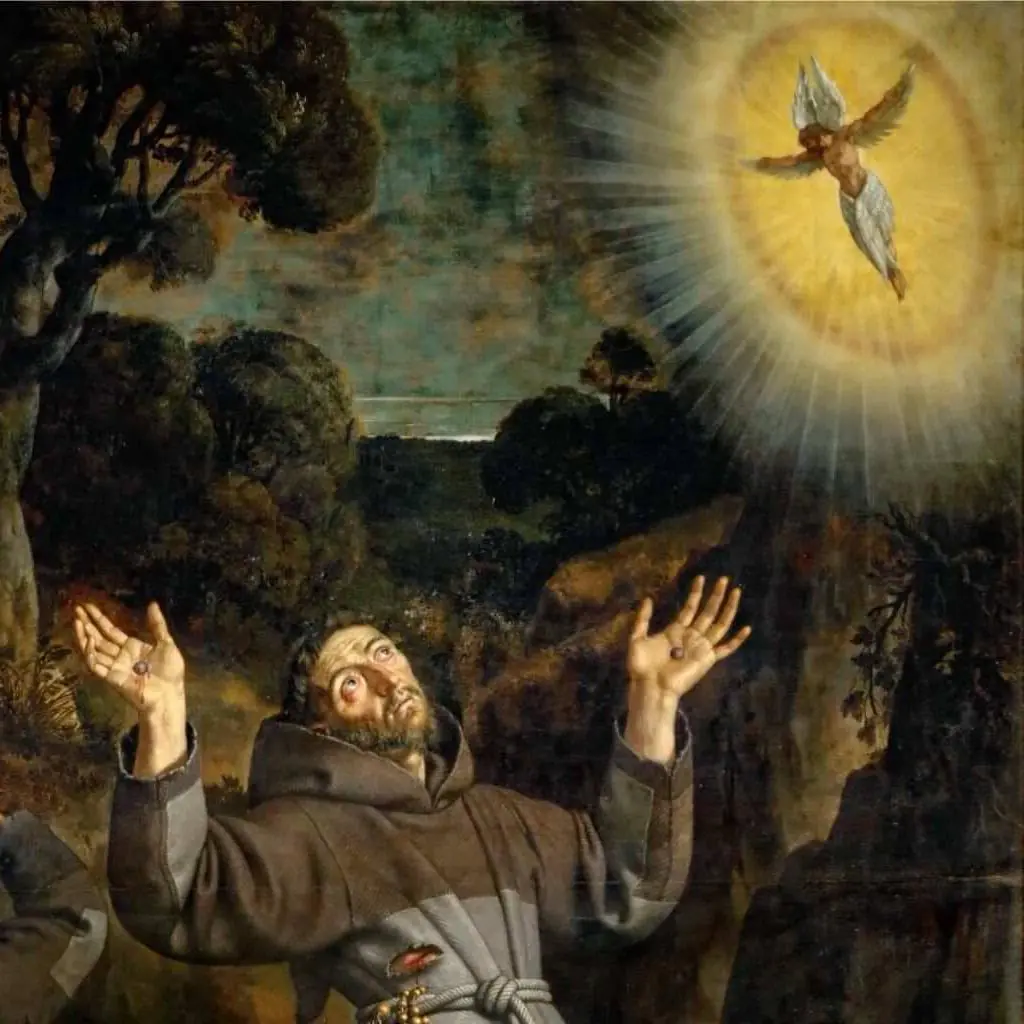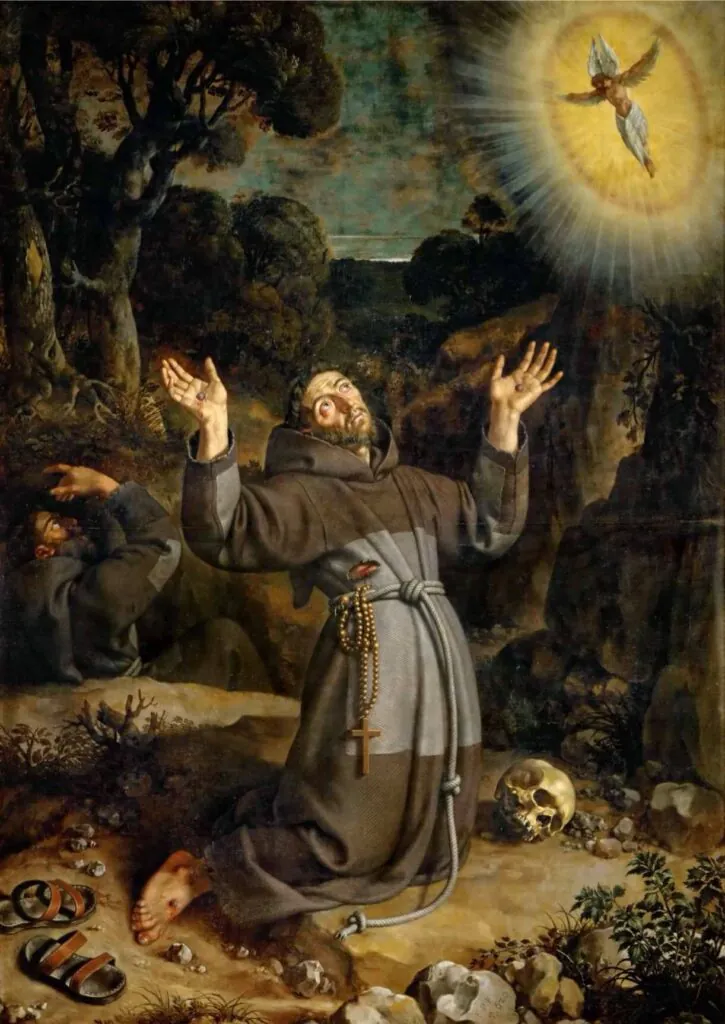Giovanni Bellini’s St. Francis in Ecstasy

Ancient artwork often carries messages that resonate beyond their time, offering glimpses into profound mysteries that continue to shape our understanding of the unknown. Giovanni Bellini’s St. Francis in Ecstasy is one such piece, blending spirituality, mysticism, and divine revelation in a way that mirrors modern discussions surrounding unexplained phenomena. The themes of celestial encounters, transformative experiences, and higher intelligence transcend eras, raising the question—were historical visions merely religious interpretations of encounters with something beyond human comprehension? In light of recent revelations regarding UFO retrieval programs and whistleblower testimonies, this painting can be revisited with fresh eyes. What if the radiant seraph in the painting represents more than divine intervention? Could it be that Saint Francis’ experience shares commonalities with contemporary accounts of non-human intelligence?
Giovanni Bellini’s St. Francis in Ecstasy stands as one of the most profound and mysterious paintings of the Renaissance, capturing the transformative moment when Saint Francis of Assisi is said to have received the stigmata. Painted around 1475–1480, this masterpiece resides in the Frick Collection in New York, where it continues to intrigue art lovers and historians alike. Bellini’s interpretation blends spirituality, symbolism, and naturalism in a way that elevates the mystical experience to an ethereal realm.
The painting depicts Saint Francis in a rocky, barren landscape, arms outstretched as he gazes upwards in rapture. His hands and feet bear the wounds of Christ’s crucifixion, the sacred stigmata that, according to tradition, miraculously appeared on his body in 1224 during a 40-day retreat on Mount Alvernia. In the upper right corner, a seraphic angel bathed in divine light appears to him, not in an aggressive or violent manner, but as an overwhelming presence that marks him with Christ’s wounds. This moment, known as the first recorded case of the stigmata, became one of the defining miracles of Saint Francis’ life, reinforcing his reputation as the ultimate imitator of Christ’s suffering and humility. His ecstatic expression conveys both the pain and the glory of this divine encounter, a paradox that lies at the heart of Christian mysticism.
The source of the story depicted in the painting comes from the life of Saint Francis of Assisi as recorded in The Little Flowers of St. Francis and The Major Legend of St. Francis by St. Bonaventure. St. Bonaventure, a 13th-century Franciscan theologian and philosopher, was instrumental in shaping the spiritual legacy of Saint Francis. As Minister General of the Franciscan Order, he compiled and systematized accounts of Francis’ life, emphasizing his mystical experiences and divine encounters. His Major Legend became the official biography of Saint Francis, reinforcing the significance of the saint’s stigmata as a divine gift and a mark of his deep unity with Christ.
Bellini’s approach to this event is deeply symbolic yet unmistakably grounded in Renaissance naturalism. Unlike earlier medieval depictions that presented the seraph directly imprinting the wounds onto Saint Francis’ body with beams of light, Bellini opts for a subtler, more introspective vision. The warm, golden glow of the angel contrasts with the cool, rugged environment, emphasizing the divine invasion of the earthly realm. Every element in the painting carries meaning: the skull near Francis’ knee symbolizes mortality and the contemplation of death, the discarded sandals suggest the sacred nature of the experience, and the lush yet sparse vegetation represents both the suffering and renewal of the soul. A second figure, possibly Brother Leo, cowers in the shadows, seemingly overwhelmed by the intensity of the moment.
Despite being created more than 250 years after the event it portrays, St. Francis in Ecstasy remains one of the most influential visual representations of the saint’s stigmata. Art historians unanimously attribute the painting to Giovanni Bellini due to its meticulous attention to light, landscape, and human expression—hallmarks of Bellini’s style. Scientific analyses, including pigment studies and X-ray imaging, confirm that the materials and techniques used align with his known works. Furthermore, the painting’s provenance has been well-documented, strengthening the certainty of its authorship. While some have speculated that Bellini’s students or followers may have had a hand in its creation, there is no credible alternative attribution that challenges Bellini as the sole artist.
Saint Francis’ reception of the stigmata was not a cause of his death, but it did mark the final years of his life with suffering and spiritual transcendence. He lived for two more years after the miraculous wounds appeared, bearing them as a constant reminder of his unity with Christ’s passion. Unlike martyrs who died from external persecution, Saint Francis’ wounds came from within—a supernatural imprint that symbolized his complete surrender to divine will. His case set the precedent for many future stigmatics, including the famous Saint Padre Pio, reinforcing the idea that such wounds were a rare but powerful sign of deep mystical union with Christ.
Bellini’s painting, then, is not just a depiction of a miracle, but a meditation on divine revelation, human suffering, and the interplay between the physical and the spiritual. The artist does not simply illustrate an event—he invites the viewer to experience the profound stillness of the moment, the awe of witnessing something beyond human comprehension. Through its luminous beauty and composition, St. Francis in Ecstasy continues to captivate audiences, drawing them into a world where the boundaries between heaven and earth blur, and the mystery of faith takes visual form. In much the same way, recent whistleblower testimonies regarding UFO retrieval programs suggest that encounters with the unknown are not confined to ancient religious texts. The interplay between divine and extraterrestrial interpretations of celestial beings is a recurring theme throughout history. Perhaps what was once seen as an angelic vision could now be reevaluated as a moment of contact with a higher intelligence, a question that remains open as we continue to explore the mysteries of the universe.



